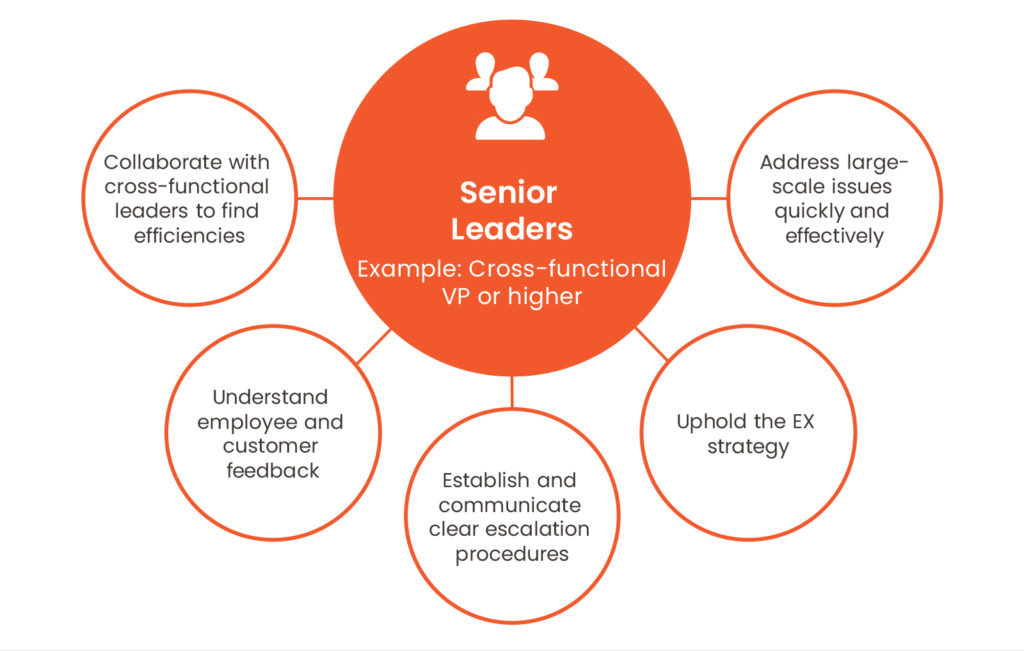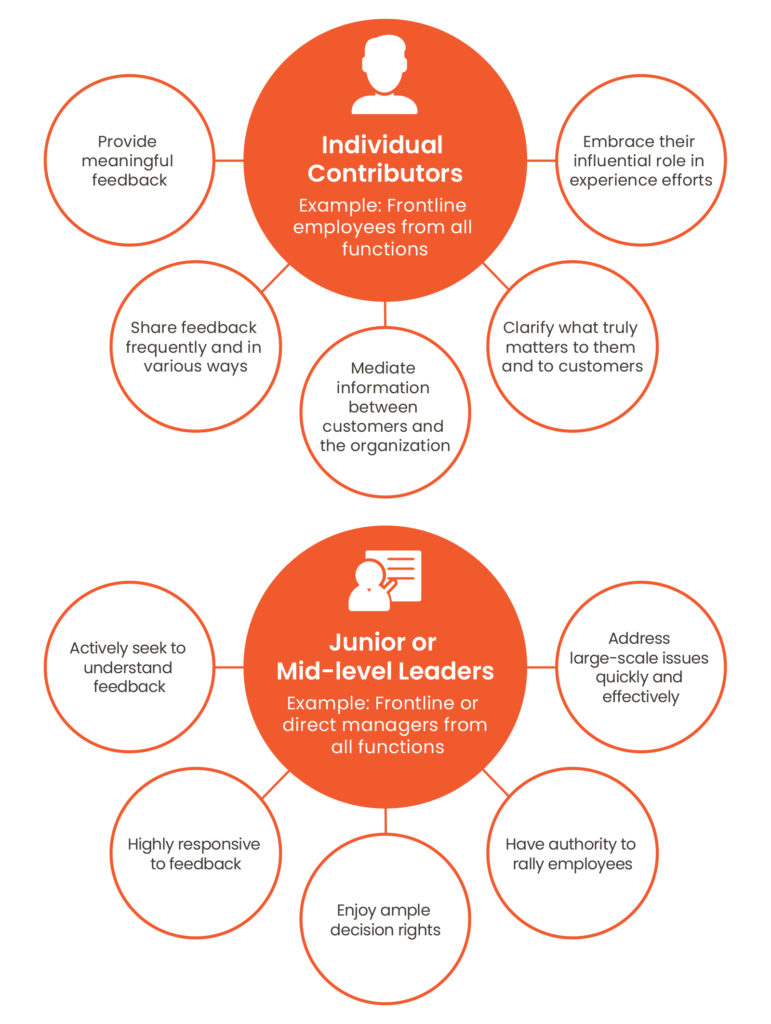Employee Experience: Articulated Accountability – Lever 3
November 5th, 2019
Earlier this year, we began to explore the concept of employee experience. Since then, we talked to more than 20 organizations to understand their approach to employee experience and identify leading practices. Now, this is the 3rd in a series of 4 articles highlighting our findings.
Throughout our research, we identified 4 levers of employee experience to create sustainable results. This article focuses on one of the employee experience levers – articulated accountability – and is just an excerpt from the main report, The Four Levers of Employee Experience to Create Sustainable Results.
Who's Responsible for Employee Experience?
We wanted to find out, once and for all: Who's responsible for employee experience? Is it HR, marketing, operations, or technology?
In our quest to understand who’s accountable, we found a wide variety of opinions. Some people think HR is responsible because it concerns people. Others think it’s a coordinated effort across organizational functions.
Even though organizations hold differing opinions as to who is responsible for employee experience, one thing is true in progressive organizations: HR still holds many of the cards when it comes to employee experience.
Hands down, most of the people we talked to believe that, because HR is already privy to employee feedback and talent management practices, it should serve as the hub for employee experience. This means that, as a hub, it serves as a speaker of the house of representatives, like in government. And as an employee experience speaker of the house, it acts as a leader: It upholds standards, coordinates efforts, maintains order, and tracks progress.
So, this isn't much of a surprise, given that HR has historically taken on the people-advocate role. But what’s interesting is that, in progressive organizations, accountability doesn’t just begin and end with HR. Instead, they define accountability as being either distributed across functions or centralized to a specific manager or team – and they further define what that means for the employee experience.
“As a company, we have 6 company level objectives. And one of them is around employees and enabling them to do their best work every day. Our goal is to ensure that at least 85% of our employees are having a level 4 or 5 employee experience.”
Greg Pryor, VP of People and Performance Evangelist, Workday
Distributed accountability: Leaders are responsible for strategy & large-scale issues
In distributed accountability, leaders are responsible for the employee experience strategy and vision. This is a plan of action designed to achieve the best and most appropriate experience for the organization. It also includes organizationwide interventions, which are often necessary to address employee feedback.
In progressive organizations, we often found that senior leaders in HR, and especially those in executive positions, play a key role in tackling these macrolevel aspects of employee experience.
Leaders in HR – working closely with leaders across functions – hold a powerful role in developing a strategic vision for employee experience. They are responsible for understanding the big picture of employee experience and developing a coherent strategy at the upper echelons of the organization. This isn't to say that they operate in a top-down manner. If you recall the speaker of the house example, these senior leaders uphold standards, coordinate efforts, maintain order, and track progress. They also play a key role in conveying the strategy’s value to the organization and setting the overall tone.
Senior leaders, especially those in VP positions or higher from a wide variety of functions (not just HR), are also responsible for addressing large-scale issues quickly and effectively (see Figure 1).

Figure 1: Distributed Accountability for Large-Scale Employee Experience Issues | Source: RedThread Research, 2019.
To do so, senior leaders uphold the employee experience strategy while seeking to understand employee and customer feedback. They collaborate with other leaders across functions to successfully address large-scale employee experience issues. They also establish and communicate clear escalation procedures for employee and customer feedback.
In progressive organizations, cross-functional senior leaders hold a special place in employee experience because they have the power to successfully address any organizationwide issues pertaining to their areas of expertise. Thus, having clear escalation procedures – in which people know which issues to escalate, how to communicate them, and to whom – for any organizational issues that arise at the local level is crucial.
“It’s important to detail the business rules to make your VOC program actionable and impactful. For example, if you get a detractor, how fast do you need to respond? Who needs to respond? When does it get escalated? Addressing a detractor quickly – while you still have a chance to fix the situation – is very important.”
Chris Hummel, Chief Marketing Officer, United Rentals
Centralized accountability: Individual contributors & direct managers are responsible for feedback
In centralized accountability, individual contributors and junior leaders – more specifically frontline or direct managers – play a significant role in sharing and responding to feedback (see Figure 2).

Figure 2: Centralized Accountability for Experience Feedback | Source: RedThread Research, 2019.
For experience efforts to work, individual contributors, especially those on the frontlines, must share meaningful feedback. In fact, individual contributors in progressive organizations share feedback frequently and effectively in a variety of ways (e.g., surveys, team huddles, one-on-one conversations). They also serve as mediators of information between what they hear from customers and the organization. They shed light on what truly matters to customers and to them as employees.
“The relationship between frontline facing employees and customers is so important. I call it contagious: how they feel and how they show up translates to the customer experience.”
Chris Albertson, SVP Client Feedback and Experience, LPL Financial
We also found that feedback (from both employees and customers) plays a key role in experience if direct managers do something about it. Thus, direct managers are also accountable at the local level. In progressive organizations, they're highly responsive to both employee and customer feedback. Responsive managers actively seek to understand feedback, and react quickly and effectively to it. They enjoy ample decision-making rights to address issues as they come up. They also have the authority to rally employees and make decisions.
For more on this and other levers of employee experience – and examples of how companies have brought them to life – we encourage you to download and read the full report by clicking the image below.